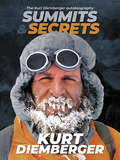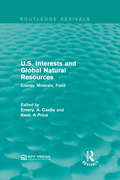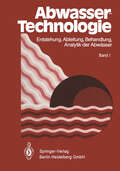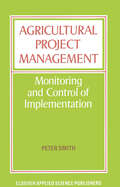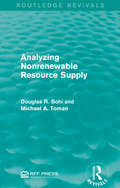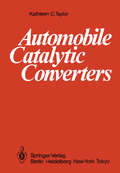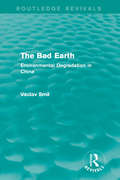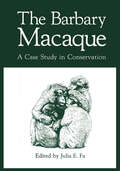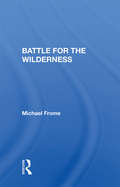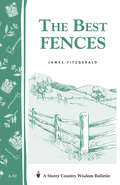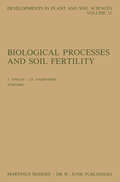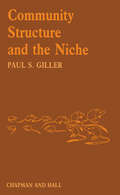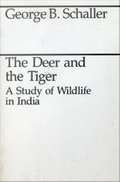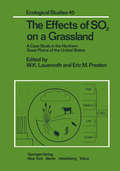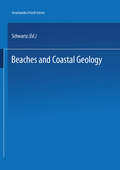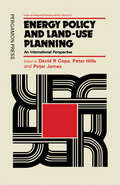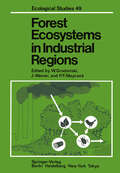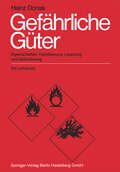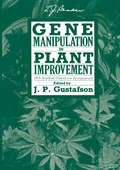- Table View
- List View
Summits and Secrets: The Kurt Diemberger autobiography
by Kurt Diemberger‘A book grows rather like a snow crystal. One doesn’t write it from start to finish but, in greater or less degree, all at the same time … that is why my book is not in chronological order; for everything is of the present, held in the moment when thought captures it.’Kurt Diemberger’s Summits and Secrets is a mountaineering autobiography like no other. Writing anecdotally, Diemberger provides an abstract look into his life and climbing career that is both fascinating and awe-inspiring to navigate.Known for surviving the 1986 K2 disaster – an account described in harrowing detail in his award-winning book The Endless Knot – Diemberger provides a captivating insight into his earlier climbs in Summits and Secrets. From climbing his first peak in the Tyrol mountains of Austria, to the epoch-making first ascent of Broad Peak with Hermann Buhl in 1957, and then summiting Dhaulagiri in 1960, where he became one of only two people to have made first ascents of two mountains over 8,000 metres, Diemberger recounts his experiences with wit, honesty and an infectious enthusiasm:‘Every climber knows the thrill … the unique inexplicable tension, which the regular shapes of the mountain world awake in him: huge pyramids, enormous rectangular slabs, piled-up triangles of rock, white circles, immense squares – the thrill of simplicity of shape and outline and the excitement of mastering them, to an unbelievable extent, by his own efforts, his own power … ’Summits and Secrets is a must-read for those wanting an insight into the life and achievements of one of the toughest high-altitude climbers the world has ever known.
U.S. Interests and Global Natural Resources: Energy, Minerals, Food (Routledge Revivals)
by Emery N. Castle Kent A. PriceOriginally published in 1983, U.S. Interests and Global Natural Resources explores the links between foreign policy and the global distribution of natural resources paying particular attention to the U.S. This collection of essays delves into the importance of factors such as differing economic development and political hostility could have on the provision of resources into the U.S and advises that nations identify their countries needs and establish policies to safeguard them. This title will be of interest to students of Environmental Studies and Policy makers.
U.S. Interests and Global Natural Resources: Energy, Minerals, Food (Routledge Revivals)
by Emery N. Castle Kent A. PriceOriginally published in 1983, U.S. Interests and Global Natural Resources explores the links between foreign policy and the global distribution of natural resources paying particular attention to the U.S. This collection of essays delves into the importance of factors such as differing economic development and political hostility could have on the provision of resources into the U.S and advises that nations identify their countries needs and establish policies to safeguard them. This title will be of interest to students of Environmental Studies and Policy makers.
Abwassertechnologie: Entstehung, Ableitung, Behandlung, Analytik der Abwässer
by W. Czysz A. Denne H. Rump W. Schneider E. Staudte W. Supperl E. Blitz B. Böhnke P. Doetsch P. Dreschmann K. Pöppinghaus K. Siekmann S. ThomasDieses Handbuch deckt die gesamte Problematik der Abwassertechnologie ab: Abwasseranfall aus dem häuslichen und industriellen Bereich, direkte und indirekte Abwasserableitung, Abwasserbehandlung sowie der Gewässerschutz werden gemeinsam behandelt. Die umfassende Darstellung berücksichtigt nicht nur die Aspekte der Industrieländer, sondern vor allem die Probleme der Schwellen- und Entwicklungsländer. Die Auswahl der Information ist stark praxisorientiert. Das Buch liefert damit die Voraussetzung für eine fachlich abgestimmte Entwicklungspolitik auf dem Gebiet der Abwasserentsorgung und bietet Beratern, Ingenieurbüros und beteiligten Firmen eine Basis für die Diskussion, Planung und Realisierung konkreter Projekte. Es ist beabsichtigt, das Buch später auch in französischer und englischer Sprache zu publizieren.
Agricultural Project Management: Monitoring and Control of Implementation
by Peter SmithI first became interested in the methods of planning the sequence and timing of jobs on large-scale development projects, as a field officer involved in planning and implementing mechanised farming schemes in Uganda in the mid-sixties. This interest was reinforced by experience of agro-industrial projects in both Nigeria and Iran, when it became obvious that the lax traditional methods of both planning and controll ing the implementation of agricultural and other rural development projects were very ineffective compared with those already in use in other disciplines. An extended spell as Resident Adviser on a World Bank project to strengthen planning and project management services in the agricultural sector in Sind Province, Pakistan, stimulated this interest further, and gave opportunities to develop the use of improved methods on some very complex schemes. This book summarises the experience gained in adapting critical path methods, well established in other fields, to Third World development projects, with their peculiar problems. It would not have been possible to reach this point without the help and stimulation of discussions with a large number of colleagues, includ ing John Joyce (then of Hunting Technical Services), Hatsuya Azumi (World Bank), and-particularly-Zaffar Sohrwardy and Akhtar Ali of Aarkays Associates in Karachi, during our work together. My thanks are also due to Yasin Mohammed, who typed most of the original draft; Anwar Mohammed and Irene Mills for final typing; and to my wife, Jill, for drawing the original figures.
Analyzing Nonrenewable Resource Supply (Routledge Revivals)
by Douglas R. Bohi Michael A. TomanOriginally published in 1984, Douglas A. Bohi and Michael A. Toman have produced a convenient reference source about disparate elements in the theory of nonrenewable resource supply and about general issues that arise when applying dynamic economic analysis. The authors emphasise the inherently dynamic nature of resource supply decisions, the effects of resource depletion on costs and behaviour, and the influence of uncertainty about costs, prices, and reserves. This title will be useful to students interested in environmental studies and economics, practitioners, and others who need to know more about complex interactions of economic forces and the resource base.
Analyzing Nonrenewable Resource Supply (Routledge Revivals)
by Douglas R. Bohi Michael A. TomanOriginally published in 1984, Douglas A. Bohi and Michael A. Toman have produced a convenient reference source about disparate elements in the theory of nonrenewable resource supply and about general issues that arise when applying dynamic economic analysis. The authors emphasise the inherently dynamic nature of resource supply decisions, the effects of resource depletion on costs and behaviour, and the influence of uncertainty about costs, prices, and reserves. This title will be useful to students interested in environmental studies and economics, practitioners, and others who need to know more about complex interactions of economic forces and the resource base.
Automobile Catalytic Converters
by Kathleen C. TaylorThe use of catalytic converters for the purification of automotive exhaust gases is a relatively new technology which was brought into existence by social pressures for the preservation of acceptable environmental conditions. The majority of catalytic practitioners have been able to watch the growth of this technology from its inception to its current state of sophistication. Automotive catalytic converter technology is now in a mature state, and this chapter from Vol. 5 Catalysis: Science and Technology by Dr. K. C. Taylor provides a review which covers both the process chemistry and the most important converter design factors. Contents 1. Introduction. . . . . . . . . . . . . . 2. Emission Regulations in the United States. 3. Exhaust Emission Characteristics. . 3 4. 1981 Emission Control Technology. 5 A. Converters. . . 5 B. Control System. 7 8 ~. Catalyst Screening . 6. Laboratory Testing. .10 7. The Chemical Reactions 13 8. Composition of Three-Way Catalysts. 16 A. Rhodium 17 21 B. Platinum. C. Palladium 22 D. Iridium . 22 23 E. Ruthenium and Nickel. F. Cerium Oxide ..... 23 G. Search for Alternatives to Nohle Metals 24 9. Catalyst Supports . 25 A. Pellets .... 26 B. Monoliths . . 26 10. The Transient Behavior of Three-Way Catalysts 27 II. Deterioration of Three-Way Catalysts. 35 A. Thermal Effects. . . . 35 B. Phosphorus Poisoning. . . 37 C. Lead Poisoning. . . . . . · 38 D. Catalyst Poisoning by Sulfur · 40 12. The 0.4 NO,; Research Objective. · 41 13. Control of Diesel Particulate Emissions.
The Bad Earth: Environmental Degradation in China (Routledge Revivals)
by Vaclav SmilAs China strives to significantly increase its economic output, the nation faces an acute deterioration of the physical resources from which this prodigious growth springs. Major problems include water shortages, the pollution of water, high levels of carcinogens in the air, accelerating erosion, and industrial pollution. Originally published in 1984, Vaclav Smil documents and evaluates China’s environmental crisis. This title will be of particular interest for students of Environmental Studies and Development Studies.
The Bad Earth: Environmental Degradation in China (Routledge Revivals)
by Vaclav SmilAs China strives to significantly increase its economic output, the nation faces an acute deterioration of the physical resources from which this prodigious growth springs. Major problems include water shortages, the pollution of water, high levels of carcinogens in the air, accelerating erosion, and industrial pollution. Originally published in 1984, Vaclav Smil documents and evaluates China’s environmental crisis. This title will be of particular interest for students of Environmental Studies and Development Studies.
The Barbary Macaque: A Case Study in Conservation (Contributions To Primatology Ser. #Vol. 23)
by John E. FaThe Barbary macaque (all too often mistakenly called an ape) was first brought to the attention of the Conservation Working Party of the Primate Society of Great Britain late 1979 when John Fa reported that 'surplus' animals were being sent from Gibraltar to dubious locations, such as an Italian safari park. Since there had been no scientific input into the Army's management of the monkey colony on Gibraltar, and there was concern about inbreeding, nutrition and health - about the long-term viability of the colony, it was felt that the Society could help. The Gibraltar Scientific Authority and the Army were very receptive to our offer and ideas, and this topic occupied successive chairmen over the last few years - Robin Dunbar and Richard Wrangham, myself and now Miranda Stevenson - with constant prompting and help from John Fa. Considerations soon extended to the status of the species as a whole, so that there have been three main aspects:- (1) the improved health of a larger self-sustaining population on Gibraltar, (2) the status and behavioural biology of natural populations in North Africa (Morocco and Algeria), and (3) the breeding achievements in European parks and zoos, and their potential for reintroduction to suitable areas in North Africa, along with other possibilities. Robin Dunbar organized the compilation of recommendations for managing the Gibraltar colony with regard to numbers, age-sex struc ture and behavioural relationships, with some observations on diet to avoid obesity and infertility.
Battle For The Wilderness
by Michael FromeThis book focuses on the principles of wilderness, exploring the actual and potential values of wilderness, its ecology, economics, the effect of human impact, and mechanisms to protect small, relatively untouched tracts in or near urban areas in the United States.
Battle For The Wilderness
by Michael FromeThis book focuses on the principles of wilderness, exploring the actual and potential values of wilderness, its ecology, economics, the effect of human impact, and mechanisms to protect small, relatively untouched tracts in or near urban areas in the United States.
The Best Fences: Storey's Country Wisdom Bulletin A-92 (Storey Country Wisdom Bulletin)
by James FitzgeraldSince 1973, Storey's Country Wisdom Bulletins have offered practical, hands-on instructions designed to help readers master dozens of country living skills quickly and easily. There are now more than 170 titles in this series, and their remarkable popularity reflects the common desire of country and city dwellers alike to cultivate personal independence in everyday life.
Biological Processes and Soil Fertility (Developments in Plant and Soil Sciences #11)
by J. Tinsley J. F. DarbyshireThe success of shifting cultivation systems developed by subsistence farmers testifies to the resilience of the "natural" soil-plant ecosystems to recover from the offtake of nutrients in crops and loss of soil struc ture. By contrast, the development of intensive cropping systems requires large inputs especially of nitrogen, together with phosphorus, sulphur and other essential elements in order to maintain the nutrient levels needed for abundant crop yields. As Dr. Cooke ably pointed out in his introductory lecture, the dis coveries and experiments of the 19th century encouraged farmers in temperate zones to rely greatly on chemical fertilizers supplements. However, the work of Charles Da{win on soil mixing by earthworms and the discovery by Hellriegel and Wilfarth in 1886 that the nodules on legume roots contain colonies of symbiotic bacteria able to "capture" atmospheric nitrogen molecules to the benefit of the host plant heralded a growing realization of the importance of soil biota in fertility studies. Biological fixation of nitrogen has been the theme of many meetings and publi~ations hitherto but at this Conference, convened on the delightful campus of Reading University, attention was mainly focussed on other biological processes in soil fertility. These Proceedings record the dominant themes and include six keynote addresses delivered at plenary sessions and seven introductory lectures to paper reading sessions by invited individuals plus 22 of the proferred papers, in six sections as tabled in the contents list.
Community Structure and the Niche
by Paul S. GillerDuring the past two decades, there has been a gradual change of emphasis in ecological studies directed at unravelling the complexity of natural communities. Initially, the population approach was used, where interest lay in the way individual populations change and in the identification of factors af fecting these changes. A good understanding of the dynamics of single populations is now emerging, but this has not been a very fruitful approach at the community level. In the natural world, few species can be treated as isolated populations, as most single species are the interacting parts of multispecies systems. This has led to a community approach, involving the study of interrelationships between species within com munities and investigation of the actual organization of natural communities as a whole. The formalization of a number of new concepts and ideas has evolved from this approach, including niche theory, resource allocation, guild structure, limiting similarity, niche width and overlap etc. , which, until fairly recently, have been examined mainly from a theoretical point of view. However, a wealth of field data is gradually being added to the literature, especially from the general areas of island biogeography and resource partitioning amongst closely related species. Community structure embodies patterns of resource allocation and spatial and temporal abundance of species of the community, as well a. '1 community level properties such as trophic levels, succession, nutrient cycling etc.
The Deer and the Tiger: Study of Wild Life in India
by George B. SchallerThe Deer and the Tiger is Schaller's detailed account of the ecology and behavior of Bengal tigers and four species of the hoofed mammals on which they prey, based on his observations in India's Kanha National Park. "This book is a treasure house of biological information and it is also a delight to read. . . . Excellent phoographs accompany the text."—Robert K. Enders, American Scientist "The one book that has been my greatest source of inspiration is The Deer and the Tiger by George Schaller, based on the first ever scientific field study of the tiger. . . . This book is written by a scientist, but speaks from the heart. . . . It reveals startling information on feeding habitats, territorial behaviour, and the nuances that make up the language of the forest; you become totally immersed in the world of the tiger. . . . For all of us who work in tiger conservation, this book is the bible."—Valmik Thapar, BBC Wildlife
The Deer and the Tiger: Study of Wild Life in India
by George B. SchallerThe Deer and the Tiger is Schaller's detailed account of the ecology and behavior of Bengal tigers and four species of the hoofed mammals on which they prey, based on his observations in India's Kanha National Park. "This book is a treasure house of biological information and it is also a delight to read. . . . Excellent phoographs accompany the text."—Robert K. Enders, American Scientist "The one book that has been my greatest source of inspiration is The Deer and the Tiger by George Schaller, based on the first ever scientific field study of the tiger. . . . This book is written by a scientist, but speaks from the heart. . . . It reveals startling information on feeding habitats, territorial behaviour, and the nuances that make up the language of the forest; you become totally immersed in the world of the tiger. . . . For all of us who work in tiger conservation, this book is the bible."—Valmik Thapar, BBC Wildlife
The Effects of SO2 on a Grassland: A Case Study in the Northern Great Plains of the United States (Ecological Studies #45)
by William Lauenroth E. M. Preston William 1727-1791 WilliamsWhen Springer-Verlag undertook publication of this volume, two opportunities arose. The first was to bring together the significant findings ofthe interacting parts of a large field experiment on a whole ecosystem. Scientific specialists and the public are rightly concerned with large-scale impacts of human activity on landscapes and with the challenge of predicting subtle, long-range repercussions of air pollution. A fundamental issue is whether ecological systems like grasslands, which have evolved for several million years under stressful conditions such as variable climate and overgrazing, are more robust than other systems in tolerating new atmospheric impacts of pollution and toxicity. At what level, and when, will an extra geochemical input, like sulfur (Chapter 4), an essential nutrient for proteins and life processes, become an overload on these systems? Some grasses and grassland ecosystems seem fairly adaptable to burdens in addition to those of weather change and tissue removal. How can experts learn to project the future of the heartland of America and other grasslands of the world on the basis of only a few years of observation and control? The second opportunity addresses a broader aspect of the project that is of interest to many readers who are not concerned with details of physiology or food chains, or the overall productivity and variations of a single plant-animal-soil community.
The Encyclopedia Of Beaches And Coastal Environments: (pdf) (Encyclopedia Of Earth Sciences Ser.)
by M. SchwartzEnergy Policy and Land-Use Planning: An International Perspective (Urban and Regional Planning Series #Volume 32)
by D. R. Cope P. Hills P. JamesThis book fills a gap in the available literature on energy policy by dealing with the relationship between energy and land-use planning. It considers, in a systematic way, energy developments in national, regional and local planning policy contexts, concentrating particularly on energy supply issues in Europe.
Forest Ecosystems in Industrial Regions: Studies on the Cycling of Energy Nutrients and Pollutants in the Niepo?omice Forest Southern Poland (Ecological Studies #49)
by W. Grodzinski J Weiner P. MaycockA number of well-known forests have been the object of studies by ecological teams. Every ecologist is familiar with the names of forests such as Whytham Woods in England (Elton 1966), Solling in West Germany (Ellenberg 1971), Hubbard Brook in New Hampshire, U. S. A. (Likens et al. 1977, Bormann and Likens 1979), and ladra6s in Central Sweden (Persson 1980). The number of such team studies grew rapidly during the period of the International Biological Programme (Reichle 1981). Each of these forests represented aspects oflocal and general interest. The Niepolomice Forest in Southern Poland (Fig. 1) does not possess any spectacular features and it may be regarded as a typical forest of the lowlands of continental Europe. Situated in the Vistula River Valley, 20 km east of Cracow (50°07' N, 20°23' E) it consists of two major sections: an extensive pine forest of the Pino-Quercetum type, and a smaller, deciduous, oak-hornbeam- Fig. 1. The location of the Niepolomice Forest in Southern Poland VI Preface Tilio Carpinetum forest. This huge forested area (11,000 ha) owes its survival in one of the most densely populated parts of Europe to a long period of protection as a royal hunting ground. The period of royal protection ended abruptly at the turn of 20th century under the devastating blows of two world wars followed by perhaps an even greater danger, the effects of modern developments in heavy industry.
Gene Manipulation in Plant Improvement: 16th Stadler Genetics Symposium (Stadler Genetics Symposia Series)
by J. Perry GustafsonThe results obtained to date involving the use of in ~ methods to facilitate wide hybridization in plants are voluminous and impressive. The techniques of embryo culture, ovule culture, and in~ pollination and fertilization represent an extension of the normal sexual hybridization process. Successes recorded in obtaining hybrids stem largely from circumventing prezygotic or postzygotic hybridization barriers. Numerous recent successful hybridizations were possible because of the development of improved tissue and cell culture systems for crop plants and attention given to genotypes used in hybridization attempts. Interspecific and intergeneric hybridization utilizing the process of protoplast fusion will bypass the limits set by all sexual me'thods. In addition to combining complete genomes from two different species through protoplast fusion, this system affords unique opportunities for creating novel cytoplasmic combinations, transfer of individual chromosomes, transfer of cytoplasmic organelles, manipulation of male sterility, and for single gene transfer. Some caution must be noted with regard to the extent of hybridization possible between distantly related species. Although practically no limit exists to the physical fusion of protoplasts from widely divergent species, the restrictions imposed by somatic incompatibility have not been adequately addressed. Regeneration of plants from the protoplast or single heterokaryon level is still a major hurdle for many important crop species before somatic cell fusion can be exploited to produce interspecific and intergeneric hybrids. Identification and selection of hybrids is also a limitation to the efficient application of cell fusion methods.
Genetic Control of Environmental Pollutants (Basic Life Sciences #28)
by Gilbert S. Omenn Alexander Hollaender Claire M. WilsonGilbert S. Omenn Dean, Public Health and Community Medicine University of Washington Seattle, Washington 98195 On behalf of the University of Washington, the City of Seattle, the sponsors and donors, and my co-organizers, I am delighted to welcome all of you to this Conference on Genetic Control of Environ mental Pollutants. My only regret is that Dr. Alexander Hollaender, who has inspired so many of us as young scientists and stimulated so many trail-blazing conferences in environmental sciences and in gen etic engineering, is ill and was unable to make the trip to Seattle. He sends his warm good wishes for an outstanding meeting and a fine volume. The purpose of this Conference is to identify and assess strat egies for more effectively and safely managing wastes and toxic sub stances in the environment, in part through use of genetically engi neered microorganisms. There is a sense of desperation in our soci ety that modern technologies have introduced a bewildering array of potential hazards to human health and to our environment. There is an accompanying sense of frustration that our prodigious basic re search capabilities and our technological ingenuity have not yielded practical ways to control many pollutants and waste streams, or- better still--to convert them to useful products.
